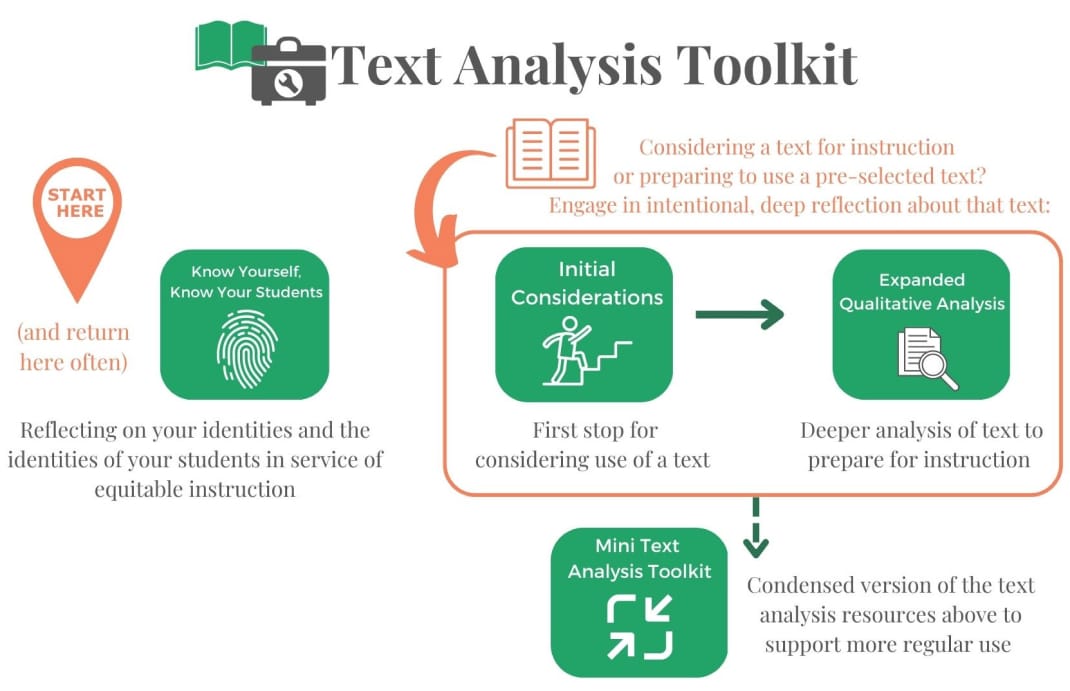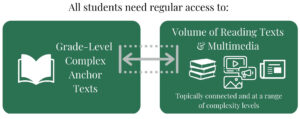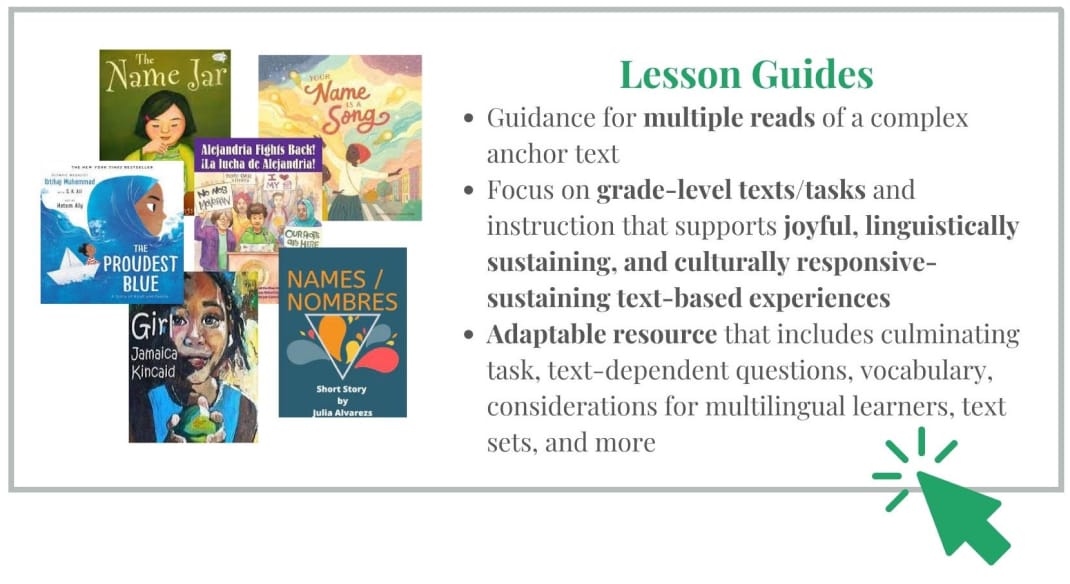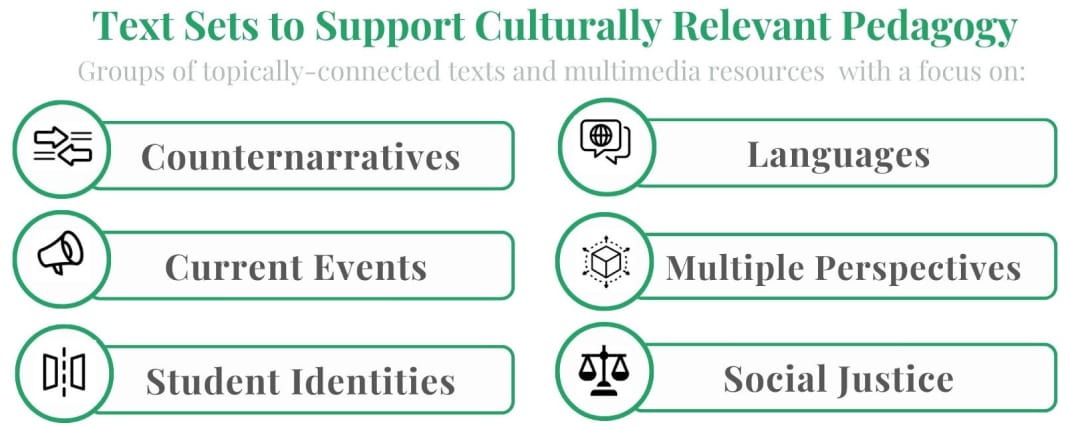About this Collection
Each and every student deserves equitable access and opportunity to develop their academic, linguistic, and cultural identities through grade-level, joyful, linguistically sustaining, and culturally responsive-sustaining learning experiences with texts. Students also deserve to be supported by educators who consistently uphold the efficacy for student assets in the literacy classroom.
In this resource hub you will find tools, models, and professional learning to support equitable literacy instruction, including: text analysis tools, sample lesson plans, and educator reflections about engaging in this work.
- LITERACY
- COLLECTION
- K-12
Table of Contents
Research-based Text Selection
A wide volume of research addresses text use in the classroom. These resources focus on what’s possible when we bring together concepts from education research and practitioner knowledge to create a coherent understanding of what equitable literacy instruction can be when we center student interests and student experiences.
How do we ensure that our text selection and text-based work is Grade-Level, Joyful, Linguistically Sustaining, and Culturally Responsive-Sustaining?
Equitable Text-Based Instruction is:
The Text Analysis Toolkit: Resources for Supporting Instruction
To do the work of developing equitable literacy classrooms, we must commit to a process of reflection, analysis, and growth that considers students and educators as individuals with layered identities and perspectives. The Text Analysis Toolkit resources are intended to support this essential work for educators and can be modified or adapted to support your specific needs. For more on planning after thoughtful text analysis, see Instructional Planning.

Know Yourself, Know Your Students
A stand-alone reflection resource meant to support educators in thinking about their own identities and those of their students. Use at strategic points over time, for example, the beginning of the school year and after each semester, to continually reflect.
Text Analysis & Reflection Tools
Initial Considerations for Complexity & Cultural Relevance
A resource to use after a first read of a text to determine whether it’s usable for the classroom and to begin thinking about complexity and relevance. This includes determining whether a text should not be used, or whether the teacher will need to be thinking carefully about attending to cautions in the text when using with students.
Expanded Qualitative Analysis
A tool to analyze features of text more deeply in order to prepare for instruction. The rubric portion of the tool comes from the qualitative complexity rubrics that were published alongside the college- and career-ready standards, and the wording has not been changed. The prompts around challenges, opportunities, and questions to ask yourself are all new for this resource. There is one version for literary texts and another for informational texts.
Mini Text Analysis Toolkit
A condensed version of the Text Analysis Toolkit intended for more regular use. Includes considerations for identity, the features of the text that are most complex, and opportunities and cautions for equitable instruction.
Toolkit Impact from Educators
Hear three educators discuss the Toolkit’s impact on their practice and the students they serve.

Sample Text Analyses
See completed text analyses for the texts below in the Sample Text Analysis for Equitable Instruction Bank. These analyses were done by educators using the Text Analysis Toolkit and include personal reflections about their own identities, students’ identities, and communities. Think about how you might use these resources to learn more about the Toolkit and text analysis; consider implications of using these texts in your own context; or review your own texts using these as inspiration.

Texts in the Sample Text Analyses for Equitable Instruction Bank were selected for a variety of reasons, including that they were books already part of a teacher’s library and that they provided opportunities for students to learn about a historically marginalized group and/or connect the topic to their own identities.
Is This a “Grade-Level” Text?
Research tells us that students should spend lots of time actively reading (or listening to in the early grades) complex texts. Despite this, many students are still denied rich learning experiences with grade-level texts due to the widespread use of leveling and tracking systems. Often, these practices fail to take into account how each student’s funds of knowledge impact their reading.
This does not mean that every text students encounter must be at grade-level complexity. Instead, students also need a volume of reading with texts at a range of complexity levels. We can maximize knowledge and vocabulary growth by engaging students with text sets, groups of resources connected by topic, to support these “miles on the page.”
Rethinking Leveled Reading Practices
In the words of Professor Alfred Tatum, Dean of the College of Education at the University of Illinois-Chicago, “Leveled texts lead to leveled lives.” Learn more about why, and what to do instead, in the resources below:
Instructional Planning
Once you’ve thoughtfully analyzed a text, you have a sense of what you need to attend to in the classroom—but how will you design a learning experience for your students using all that you have uncovered during your analysis and reflection?
Lesson Guides for Equitable Instruction
The Lesson Guides for Equitable Instruction Bank includes sample educator-developed resources to support multiple days of instruction with an anchor text. Consider how you might adapt these resources for your own context, students, and/or grade level, or how you might apply what you glean from these guides to enhance instruction with your own materials or texts.
Interested in providing feedback on teaching one of these lessons with your students or contributing a lesson guide to the bank? Email us!
Text Sets
You’ve analyzed an anchor text that either you have selected or that’s included in your instructional materials, and you’ve identified a need, gap, or opportunity related to equitable instruction—now what? Text sets are intentionally grouped collections of texts and media resources at a variety of complexity levels that are focused on a specific topic. Using topically-connected sets of resources is a research-based way to grow vocabulary and knowledge for all students through a volume of reading, and it can be used to fill a gap in relevance, perspectives, or representation in your instructional materials; center student interests or identities; or enhance an existing unit’s connection to social justice.
Educator Voices
Equitable text selection and use can only happen by centering the people at the heart of this work. In this section, hear from educators about their experiences striving for text-based work that illuminates students’ identities, sharpens their lenses for seeing the world, and engages them with rich content and ideas.
Partner Snapshot: The School District of Philadelphia
Student Achievement Partners worked with the School District of Philadelphia to create a district-specific unit preparation tool to support their newly developed Curriculum Equity Initiative and anchor text resources. These resources were developed using the Text Analysis Toolkit as a starting point for customization, and the resulting unit planning tools focus on three flexible pathways for intellectual preparation in service of text-based, inclusive literacy.
See the resulting unit preparation and text analysis tools, as well as text-specific examples of this work in action, for Grades 8 and 12 here.
The Planning Pathways tools highlight three pathways for intellectual preparation: Unit Content & Text Complexity, Identity & Relevance, and Criticality & Critical Conversations.
Educator Reflections
Toolkit Advice: Hear three educators discuss practical strategies for engaging in the work of using complex texts with inclusive representation in their classrooms.

Additional Resources & Professional Learning
Learn More About Equitable Text Selection & Use




